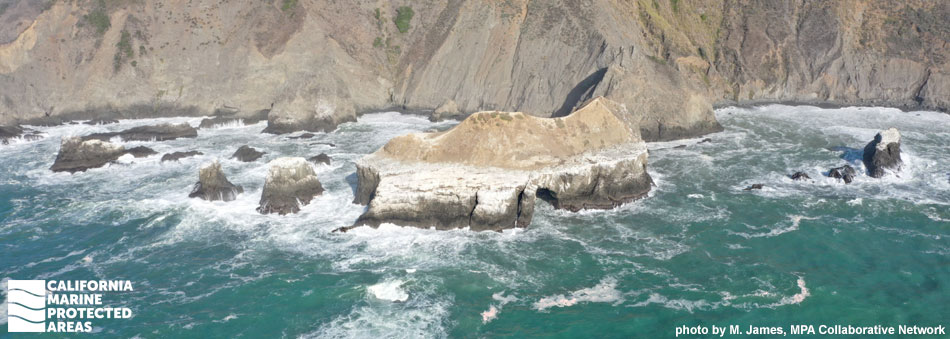
Overview
Vizcaino Rock Special Closure is located south of Double Cone Rock State Marine Conservation Area along the remote Mendocino coastline, just over 20 miles north of Fort Bragg. Surrounded by small rocky outcroppings, Vizcaino Rock is a large, rocky sea stack that sits less than a hundred feet offshore from Cape Vizcaino, at the south end of Rockport Bay. A 300-foot zone of protected waters surrounds this critical habitat, protecting seabirds and other marine life, and buffering the impacts of human disturbance.
This seasonal special closure prohibits boat traffic and human activity from March through August. Vizcaino Rock is used by nearly 8,800 breeding seabirds annually, including the Brandt’s cormorant, pigeon guillemot, and rhinoceros auklet, which nest and roost on the rocky terrain. Since access along this stretch of coast is limited, one of the only ways to catch a glimpse of Vizcaino Rock is while boating or kayaking offshore.
Regulations
March 1 to August 31 only:
Boating and access are restricted. Except as permitted by federal law or emergency caused by hazardous weather, no vessel shall be operated or anchored from the mean high tide line to a distance of 300 ft. seaward of the mean lower low tide line of any shoreline of Vizcaino Rock.
No person except employees of the California Department of Fish and Wildlife, United States Fish and Wildlife Service, National Oceanic and Atmospheric Administration, or United States Coast Guard during performance of their official duties, or unless permission is granted by the California Department of Fish and Wildlife, shall enter the area.
California Code of Regulations Title 14, Section 632(b)(18)
Quick Facts
Special Closure size: 0.02 square miles
Habitat composition*:
- Rock: 0.06 square miles
- Sand/mud: Less than 0.01 square miles
*Habitat calculations are based on three-dimensional area and may exceed the total MPA area listed above.